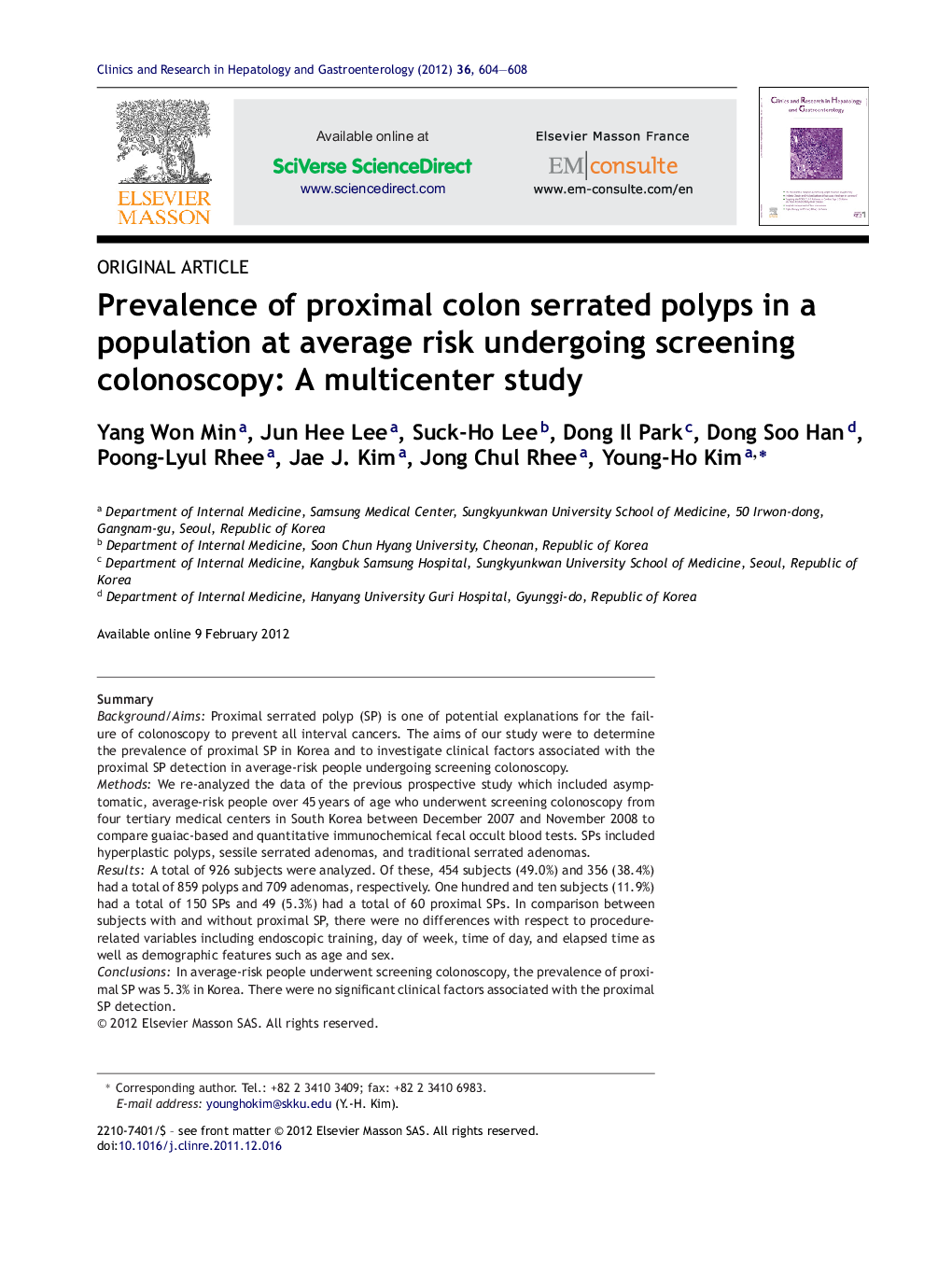| Article ID | Journal | Published Year | Pages | File Type |
|---|---|---|---|---|
| 3286822 | Clinics and Research in Hepatology and Gastroenterology | 2012 | 5 Pages |
SummaryBackground/AimsProximal serrated polyp (SP) is one of potential explanations for the failure of colonoscopy to prevent all interval cancers. The aims of our study were to determine the prevalence of proximal SP in Korea and to investigate clinical factors associated with the proximal SP detection in average-risk people undergoing screening colonoscopy.MethodsWe re-analyzed the data of the previous prospective study which included asymptomatic, average-risk people over 45 years of age who underwent screening colonoscopy from four tertiary medical centers in South Korea between December 2007 and November 2008 to compare guaiac-based and quantitative immunochemical fecal occult blood tests. SPs included hyperplastic polyps, sessile serrated adenomas, and traditional serrated adenomas.ResultsA total of 926 subjects were analyzed. Of these, 454 subjects (49.0%) and 356 (38.4%) had a total of 859 polyps and 709 adenomas, respectively. One hundred and ten subjects (11.9%) had a total of 150 SPs and 49 (5.3%) had a total of 60 proximal SPs. In comparison between subjects with and without proximal SP, there were no differences with respect to procedure-related variables including endoscopic training, day of week, time of day, and elapsed time as well as demographic features such as age and sex.ConclusionsIn average-risk people underwent screening colonoscopy, the prevalence of proximal SP was 5.3% in Korea. There were no significant clinical factors associated with the proximal SP detection.
